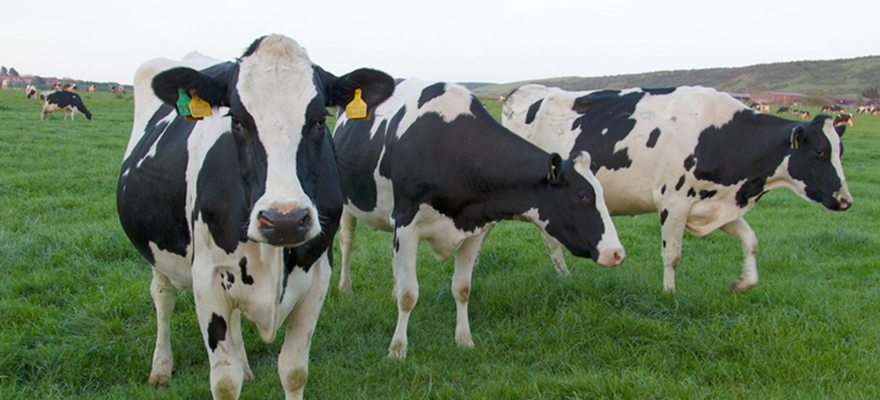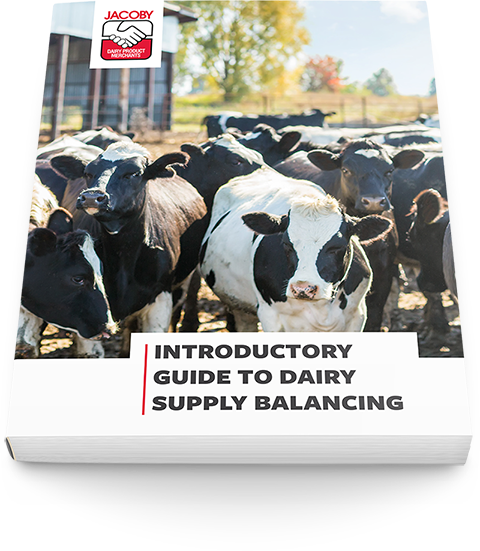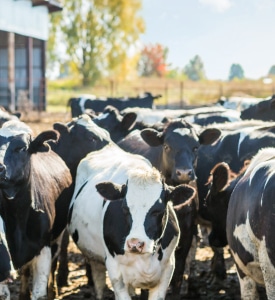A driving factor in the volatility of the dairy industry is that the quantity and quality of milk produced over time cannot be guaranteed. It depends too much on factors farmers can’t control—though they do try.
Industry and government agencies both try their best to accurately predict milk production, and everyone hopes that the milk will be of superb quality. But neither is assured, and that uncertainty has shaped how the industry has evolved and how products are marketed.

Factors affecting milk production
The amount of milk a cow produces depends largely on the environment it’s in. It’s all about comfort: The more comfortable the cow, the more milk it will produce. The less comfortable the cow, the less productive it is. Environmental factors include:
- Weather, climate and geography – Temperate climates with milder seasons put less stress on cows than climates with more extreme weather. Geography is closely tied to weather and climate. For example, cows in Wisconsin and Michigan tend to be more productive than cows in New Mexico due to heat in the latter region. Heat and humidity are the factors with largest impact. If nighttime temperatures cool, cows get a chance for cover even in hot seasons. However, if they don’t have a chance to cool down, they will eat less feed and produce less milk.
- Feed – Weather and climate can also affect the abundance and quality of feed, which translates to quantity and quality of milk produced. Feed prices and availability can have a large impact on what farmers can use.
- Accommodations – When cows have comfortable places to rest, space to graze and farmers who work to keep everything clean, they’re more productive.
Biology and the way farmers interact with it also affects milk production. Factors include:
- Species – Different cow breeds naturally produce different quantities (and qualities) of milk.
- Age – Younger cows generally produce more milk than older ones. Farmers constantly face the decision of letting a cow give milk versus when it’s economically better to slaughter for beef and let a younger cow replace it.
- Milking frequency – Farmers are very precise about how frequently cows are milked. The amount of milkings per day adds to labor and equipment costs. But waiting too long between milkings means quantity and quality will suffer.
- Health – Sick cows produce less milk —and poorer quality milk (which is discussed below)— than healthy ones.
- Dry period – How long a cow is allowed to be “dry” in between calvings impacts how much milk it will give during lactation.
Factors affecting milk quality
The quality of milk a cow gives directly affects how much a farmer is paid for it. That’s why farmers go to such great lengths to assure quality of milk. Factors impacting the quality of milk a cow gives include:
- Cow health – A cow’s health has the biggest impact on the quality of the milk it produces. Just like humans, cows can catch illnesses such as a cold or flu. They’re also susceptible to irritation or inflammation of their udders if stall conditions are poor. Exposure to mud, manure and runoff can expose the herd to more pathogens, increasing incidents of infection. Rainy seasons can predictably lead to higher somatic cell counts.
- Somatic cell counts – These are the best markers of cow health. High somatic cell counts in milk indicate an increased presence of white blood cells—a signal that the cow is fighting an illness. Other types of somatic cells can degrade the fat and protein content in milk. This hurts the quality of the milk and can lead to deduction in pay.
- Diet – Just as a cow’s diet impacts the quantity of the milk it produces, it also affects the quality composition. In times of food scarcity, both will suffer. When feed is plentiful, farmers have more room to adjust feed to enhance the components of milk. Better composition means a better paycheck.
- Milk handling – Another factor affecting milk quality is how it’s treated once it leaves the cow. Because milk is a naturally good place for bacteria to thrive, bacteria counts taken during processing can show whether milk was taken with clean equipment and cooled quickly. The cleaner the equipment and the faster the milk is cooled, the lower the bacteria count will be.
Use of RBST
A touchy subject in the dairy and food industries is the use of synthetic hormones to boost milk production. Specifically, the use of recombinant bovine somatotropin (RBST) has been controversial. This manmade version of a hormone naturally occurring in cows allows them to produce more milk, but some believe it is linked to an increased instance of bacterial infection in cows that results in an increased presence of antibiotics or antibiotic-resistant bacteria in milk. Note that all milk is tested before it enters the food supply. Milk that tests positive for antibiotics is always discarded.
Studies on the matter have shown mixed results and remain ongoing, but the industry has largely moved away from RBST use due to consumer demand. More and more plants refuse to buy milk from cows they know received RBST supplements.
Your partner in milk supply balancing
T.C. Jacoby & Co. got its start balancing milk supplies in the Midwest in 1949. That’s given us decades of experience in an industry that’s always evolving. We stay in front of that changing industry because it’s for the good of our customers and the industry as a whole.
If you have any questions about milk production or quality, ask us any time. You can also learn more about the dairy industry’s many moving parts in our introductory guide to dairy supply balancing.
Introductory guide to dairy supply balancing
Everyone wants balance. Getting there starts here.


